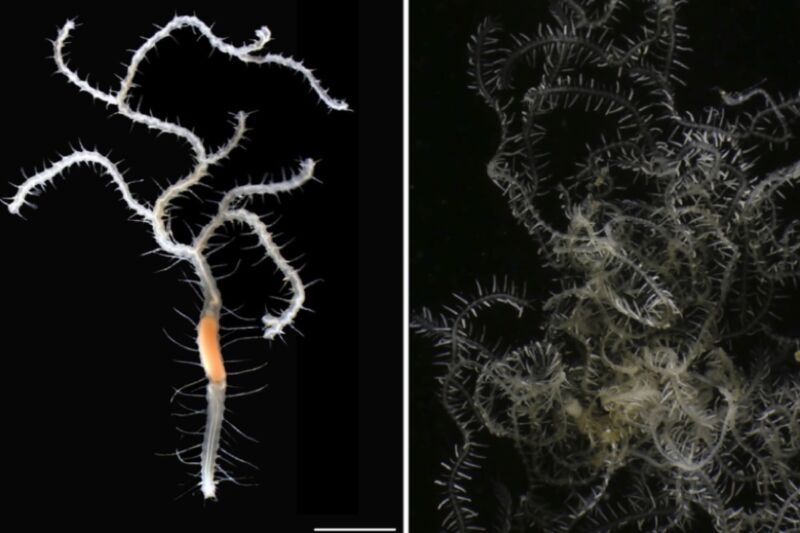
Enlarge / (left) Biologists have named a newly discovered species of branching worm, Ramisyllis kingghidorahin, after Godzilla's nemesis. (right) Fragment of one specimen of the branching worm. (credit: M.T. Aguado)
In the 2019 blockbuster film, Godzilla: King of the Monsters, everyone's favorite kaiju, Godzilla, battled another titan named King Ghidorah, a monster notable for its three heads. Now biologists have discovered a new species of marine worm that has one head but a body that can branch out into several posterior ends, according to a recent paper published in the journal Organisms Diversity & Evolution. So naturally the biologists named the new species after Godzilla's legendary adversary: Ramisyllis kingghidorahi.
"King Ghidorah is a branching fictitious animal that can regenerate its lost ends, so we thought this was an appropriate name for the new species of branching worm," said co-author M. Teresa Aguado of the University of Göttingen. In fact, the director of the first Ghidorah-centric feature film in 1964, Ishiro Honda, said his monster was a modern take on a legendary eight-headed and eight-tailed dragon/serpent in Japanese folklore called Yamata no Orochi.
According to Aguado and her co-authors, only two other species of these rare branching worms have been discovered. Back in 1879, an amateur naturalist named Charles Macintosh reported the discovery of a "remarkably branched Syllid" (dubbed Syllis ramosa). The creature was found lurking inside a glass sea sponge in the Philippines during the Challenger natural history expedition. Syllis ramosa was the first known instance of an annelid species with a "randomly branching asymmetrical body."
Read 7 remaining paragraphs | Comments
